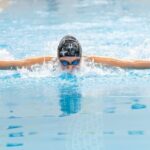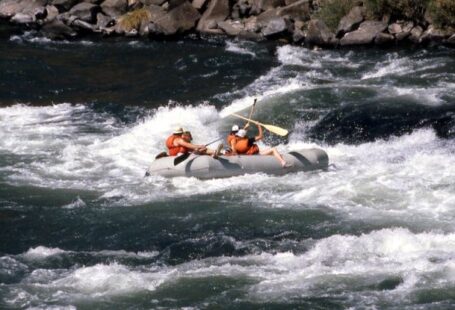Open water triathlons can be an exhilarating challenge for athletes of all levels. However, one of the key aspects that can often cause anxiety and discomfort during these events is managing breathing in the open water. Unlike swimming in a pool, where you have clear lane lines and walls to push off for each breath, open water swimming presents its own set of challenges when it comes to breathing technique. In this article, we will discuss some effective strategies to help you manage your breathing and improve your performance in open water triathlons.
### Understanding the Importance of Breathing
Breathing plays a crucial role in swimming, as it provides the body with the necessary oxygen to fuel your muscles and maintain a steady pace. In open water triathlons, where conditions can be unpredictable and the environment challenging, mastering your breathing technique is essential for a successful swim leg. Proper breathing not only helps you stay relaxed and focused but also ensures that you maintain a steady rhythm throughout the race.
### Practice Controlled Breathing
One of the best ways to improve your breathing in open water is through consistent practice. Incorporate breathing drills into your training sessions to help you develop a controlled and efficient breathing pattern. Focus on exhaling fully underwater to clear out carbon dioxide from your lungs, allowing you to take in a fresh breath when you turn your head to the side. Practice breathing on both sides to balance out your stroke and avoid muscle fatigue.
### Sighting Breaths
In open water swimming, sighting refers to the act of lifting your head out of the water to orient yourself and navigate the course. While sighting, it is crucial to time your breaths effectively to avoid disrupting your rhythm. Try to coordinate your breathing with your sighting technique, taking a quick breath as you lift your head to sight and exhaling slowly as you turn back to your regular swimming position. This will help you conserve energy and maintain a smooth stroke.
### Relaxation Techniques
Staying calm and relaxed in the open water is key to managing your breathing effectively. Practice mindfulness techniques such as deep breathing exercises and visualization to help reduce stress and anxiety before and during the race. Focus on maintaining a steady breathing rhythm, even when faced with challenging conditions like choppy water or crowded swim starts. By staying relaxed, you can conserve energy and swim more efficiently.
### Drafting and Positioning
During the swim leg of a triathlon, positioning yourself strategically in the water can have a significant impact on your breathing and overall performance. Drafting off other swimmers can help reduce resistance and make swimming feel easier, allowing you to focus on your breathing technique. Try to find a swimmer or group of swimmers who are swimming at a similar pace and position yourself behind or to the side of them to take advantage of the draft.
### The “Bilateral Breathing” Technique
Bilateral breathing involves breathing to both sides during your swim stroke, allowing you to balance out your stroke and improve your overall efficiency. By practicing bilateral breathing in training, you can adapt to changing conditions in open water and avoid developing muscle imbalances. Experiment with different breathing patterns to find what works best for you, whether it’s breathing every three strokes, every five strokes, or using a more flexible approach based on the race conditions.
### Overcoming Challenges
Open water triathlons can present various challenges that may affect your breathing, such as cold water temperatures, waves, or currents. Prepare yourself mentally and physically for these challenges by simulating similar conditions in your training. Practice swimming in different bodies of water, wearing a wetsuit if necessary, and familiarizing yourself with the race course to build confidence and adaptability. By being prepared for potential challenges, you can approach the swim leg with a calm and focused mindset.
### The Power of Visualization
Visualization is a powerful tool that can help you improve your breathing technique and performance in open water triathlons. Before the race, take time to visualize yourself swimming smoothly and confidently, focusing on your breathing rhythm and stroke technique. Imagine yourself overcoming any obstacles or challenges that may arise during the swim leg, and visualize yourself crossing the finish line feeling strong and accomplished. By mentally rehearsing your race, you can build confidence and reduce anxiety, allowing you to perform at your best on race day.
### Embracing the Journey
Managing breathing in open water triathlons is a skill that takes time and practice to master. Embrace the journey of learning and improving your breathing technique, and remember that every race is an opportunity to grow and develop as an athlete. By incorporating these strategies into your training and race preparation, you can enhance your performance in the water and enjoy the unique challenge of open water triathlons. Stay focused, stay relaxed, and most importantly, keep breathing.





